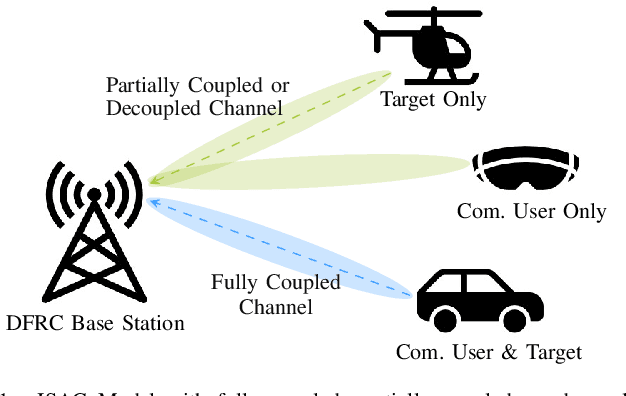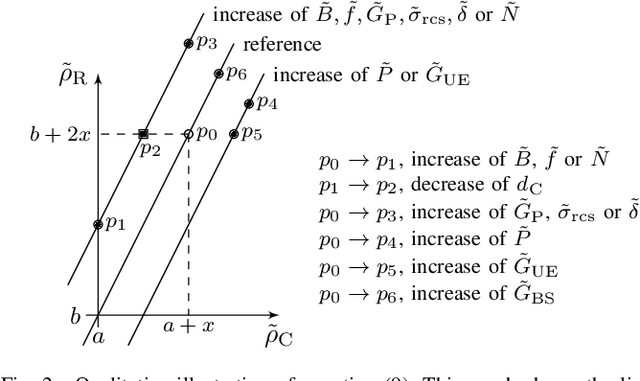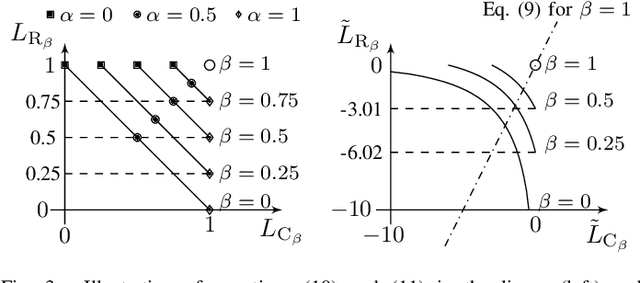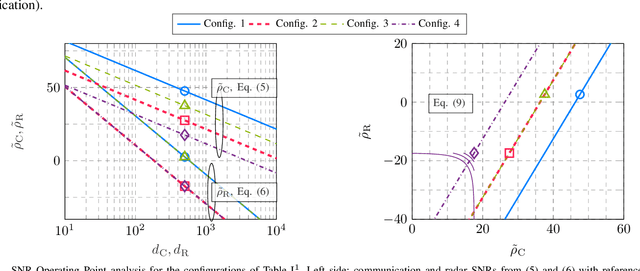Konpal Shaukat Ali
A System Level Analysis for Integrated Sensing and Communication
Feb 05, 2024



Abstract:In this work, we provide a system level analysis of integrated sensing and communication (ISAC) systems, where a setup with a mono-static dual-functional radar communication base station is assumed. We derive the ISAC signal-to-noise ratio (SNR) equation that relates communication and radar SNR for different distances. We also derive the ISAC range equation, which can be used for sensing-assisted beamforming applications. Specifically, we show that increasing the frequency and bandwidth is more favorable to the radar application in terms of relative SNR and range while increasing the transmit power is more favorable to communications. Numerical examples reveal that if the range for communication and radar is desired to be in the same order, the ISAC system should operate in mmWave or sub-THz bands, whereas sub-6GHz allows scenarios where the communication range is of orders of magnitude higher than that of radar.
Integrated Sensing and Communication for Large Networks using a Dynamic Transmission Strategy and Full Duplex
Nov 17, 2022Abstract:A large network employing integrated sensing and communication (ISAC) where a single transmit signal by the base station (BS) serves both the radar and communication modes is studied. Typically in ISAC, bistatic radar detection is done at a passive radar. The radar-mode performance is significantly more vulnerable than the communication-mode due to the double path-loss in the signal component while interferers have direct links. To combat this, we propose: 1) monostatic radar detection at the BS via full-duplex (FD), 2) a novel dynamic transmission strategy (DTS). With FD monostatic detection we are able to improve radar-mode performance over bistatic detection in certain scenarios, while bistatic detection dominates in others. We also analyze the performance of joint bistatic and FD monostatic detection. Significant improvements in radar-performance can be attained with joint detection in certain scenarios, while using one strategy is beneficial in others. Our results highlight that with the DTS we are able to significantly improve quality of radar detection at the cost of quantity. Further, DTS causes some performance deterioration to the communication-mode; however, the gains attained for the radar-mode are much higher. We show that joint detection and DTS together can significantly improve radar performance from a traditional radar-network.
 Add to Chrome
Add to Chrome Add to Firefox
Add to Firefox Add to Edge
Add to Edge